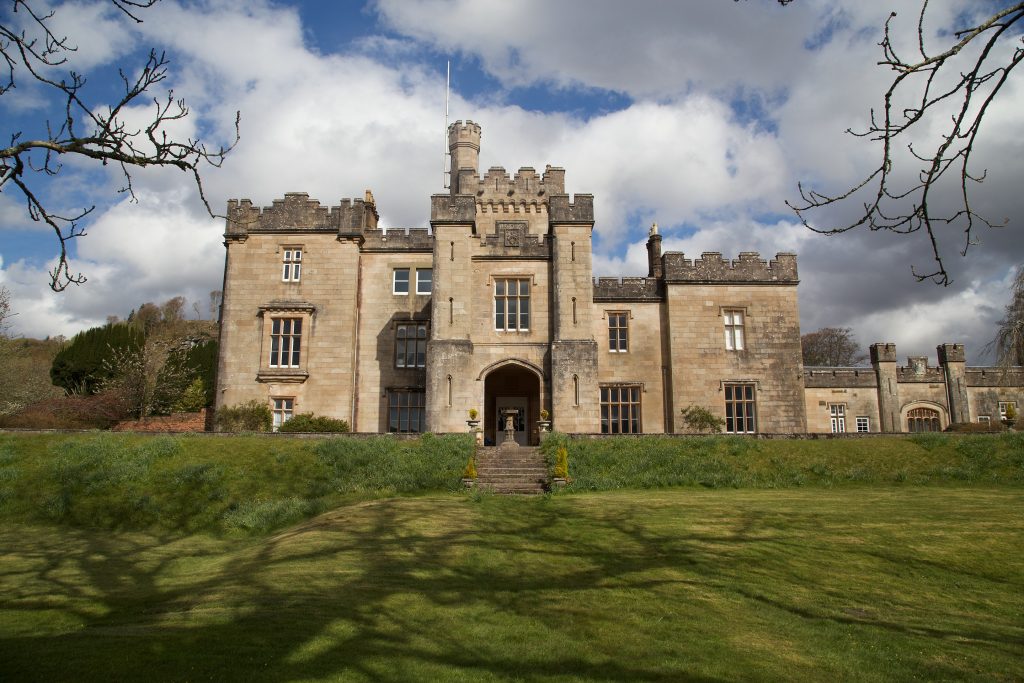“Anyone for a cup of cocoa?”
Background
As with most of the roads in the Estate, this one is named after a place in Scotland: Minard is a village situated on the A83 near Inveraray, not far from where Archibald Corbett’s family had a highland holiday home. There is a castle nearby bearing the same name, which may have fired the young Archibald’s imagination.

Minard Castle in the west of Scotland

Minard Road c 1910
Minard Road is one of the longest in the Catford/Hither Green area. It lies in the heart of the Corbett Estate and runs from Hither Green Lane (north side of the South Circular Road) to Hazelbank Road in the south. It’s in four sections, intersected by Brownhill Road, Sandhurst Road (near to Sandhurst School) and Dowanhill Road.
Confusingly, the main entrance to Sandhurst School is actually in Minard Road.
Building of the street commenced in 1900, and when it was finished there were 220 houses. The 1911 census recorded 929 people residing in the road. That equates to 4.2 people per house – a mid-range average on the Estate.
The Early Residents: details from the 1911 Census
The number of females and males in Minard was quite even with 51% to 49%. The Estate average was 53% female and 47% male.
The top two adult female first names here were Emily and Florence, with the male equivalents being William and John/Thomas. William was by far the most popular male adult name in the estate. For children, it was Dorothy/Kathleen/Winifred (equal) and John in Minard.
As with almost every other street, the most popular kind of work for the citizens of Ardgowan Road was as a Clerk. Of the 353 people in employment, 86 said that they did some sort of office job (Clerk). Amongst the non-office workers, cocoa provided an income for several people: Lionel Bevis at No. 190 listed his job as ‘Advertising Inspector Cocoa’; Sheppard Scott at No. 146 was an ‘Agent Chocolate and Cocoa’; and over at No. 96 lived James Hitch whose job title barely fitted into the census box: he was a ‘Commercial Traveller- Cocoa Mats Cocoa Making of Rugs’. At No. 104 we had Martin Horan, age 46, who was a ‘Watcher for HM Customs’, which was effectively someone who simply watched goods, a sort of security guard. Possibly the most unusual job was that of Arthur Hardman at No. 202, who described himself as a ‘Black and White Artist’: presumably he was a painter who specialized in working in monochrome.
The street record for the highest number of children in a single family went to two families. They were the Knowles family at No. 2a and the Mumford family at No. 70. Each family had 9 children. This means there were at least 11 people living in those houses.
At No. 30 lived H N and M R Case who take the road’s prize for ‘residents from furthest away’: They were from China. Overall, the vast majority of the street’s residents (73%) had been born in London (a little higher than the Estate average of 72%).
The oldest resident at the time of the 1911 census was Annie Eliza Clark who lived at number 199. She was 83 years old.
A deadly attack
Minard Road witnessed the terrible events of 20th January 1943, when the primary school located between it and Ardgowan Road was bombed by a German plane. 44 people died, the vast majority children, and another 60 were injured. Please see the Profile of Ardgowan Road for more information.